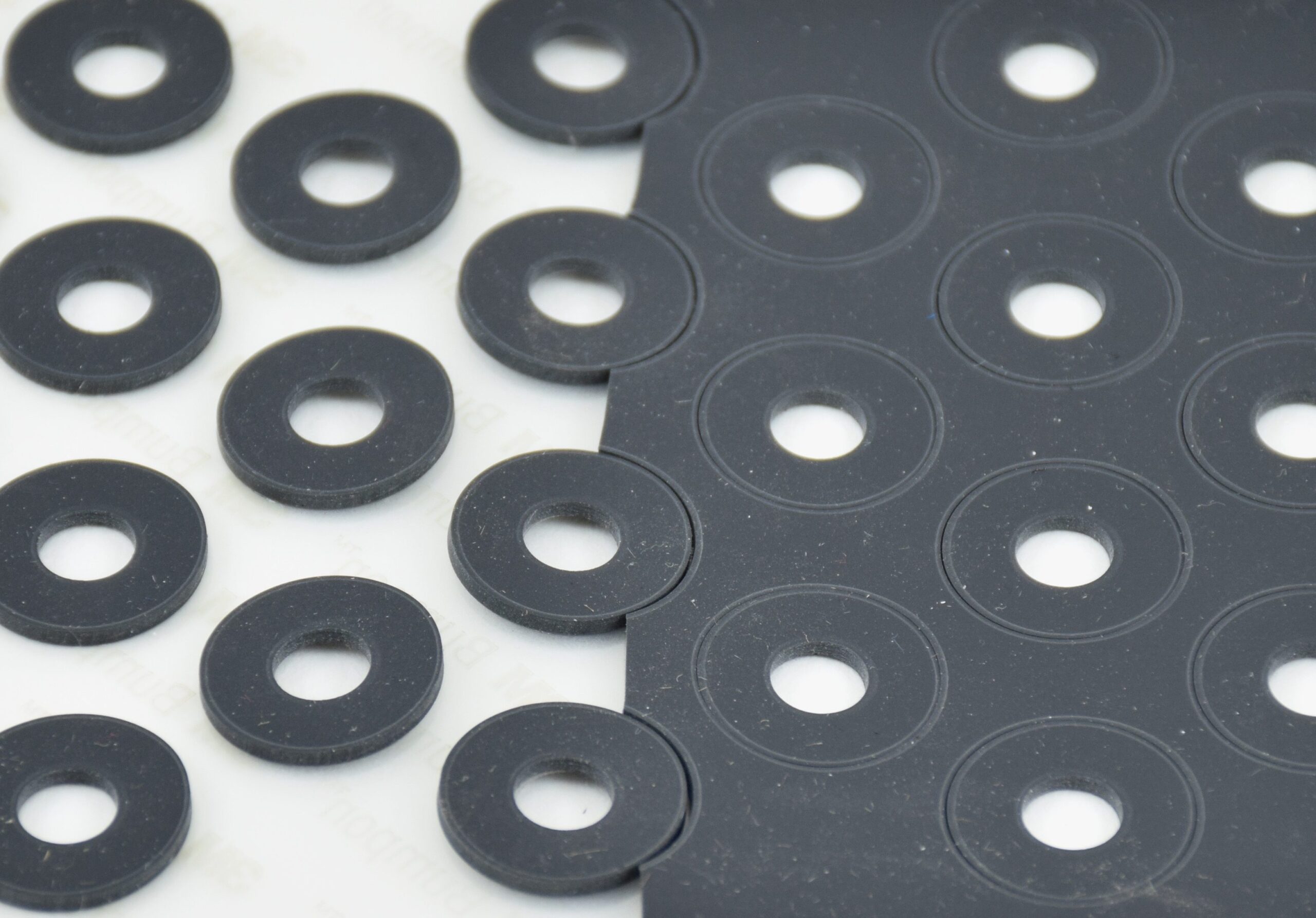
When you need a series of pieces cut from flexible materials, like gaskets, pads, or spacers, you have several processing options. Two of the more common techniques are flatbed die cutting and rotary die cutting, which are both very similar and very different.
Both flatbed and rotary cutters can produce great end products, but which one is best for your design? The following explains what die cutting is, and the differences between flatbed and rotary die cutting.
The Basics of Die Cutting
Die cutting is a fabrication process that cuts shapes from flexible materials, like foam, rubber, and plastic. With die cutting, your pieces can be uniquely and accurately cut, so each design works for your end-use, and each part in a series is identical to the next.
Products (such as gaskets, dampeners, bumpers) can also be cut quickly to get your pieces in use as soon as possible.
Flatbed Die Cutting
Flatbed die cutting is used for four main reasons:
- If your product is thick
- If your material only comes in a sheet
- If your order is relatively small
- If you’re looking for a cost-effective option
When we shape objects with a flatbed die cutter, the machine stamps out each product using a hydraulic press and steel rule dies. The raw material feeds along the base while the press is pushed down vertically to make the cut.
The vertical motion allows for thicker material to be shaped and results in very little curvature of the material. Flatbed die cutting is also used for combinations of materials.
Rotary die cutting
We use a rotary die cutter specifically for when:
- Your product is thin
- Your order quantity is large
- Your order needs to be kiss cut
- Your design as tight tolerances
To have products shaped by a rotary die cutter, the raw material is fed between two rolling cylinders at a very high speed. The shape is cut out on the rolling die with high tolerance and high accuracy, and even produces less waste than flatbed die cutting.
Rotary die cutting can also cut each piece all the way through or kiss cut, where a paper lining is left to keep every piece together until needed.
Which should you use?
Choosing between the two processes can be an easy decision. Just consider a few aspects:
- Is your part thick or thin?
- Is your order quantity large or small?
- Does your product need to be kiss cut?
- Are tight tolerances or product costs important?
If you need a hand in deciding, give us a call. Our die cutter engineers are available to weigh your options and help you choose.
Need Custom-Fabricated Materials? Contact Us Today!
American Flexible Products is a nation-wide converter of flexible materials—from foam to rubber to silicone and more. Every product is custom-cut and shaped to your design specs by our materials engineers.
Call 952-368-4225 or fill out our form below. Our material experts will help guide you through our process and give you a free quote.
[contact-form-7 id=”1783″ title=”Contact AFP”]




